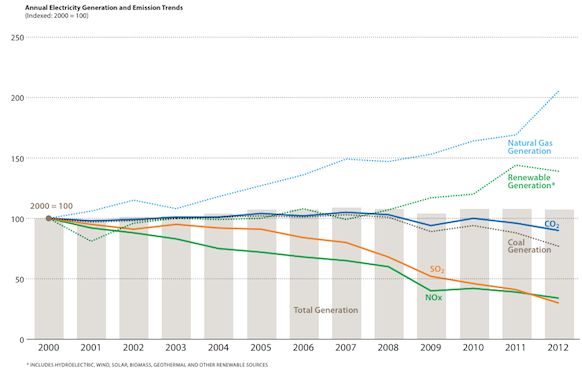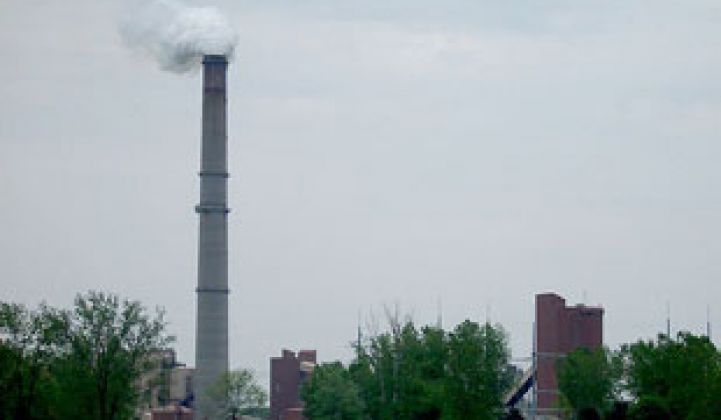When it comes to emissions, carbon dioxide tends to get the lion’s share of the headlines.
But there have been large gains in some of the other major emissions of the largest power producers in the U.S., according to a new report from NRDC and major energy companies, Benchmarking Air Emissions.
The ninth annual report found that sulfur dioxide (SO2) and nitrogen oxides (NOX) are 70 percent and 72 percent lower, respectively, than they were in 1990. Mercury is down 40 percent since 2000, the first year that it was tracked.

Source: Benchmarking Air Emissions
The gains are due to federal legislation, particularly updates to the Clean Air Act in 1990. Currently, some in the industry are fighting another major federal rule, the EPA’s Mercury and Air Toxics Standards (MATS). EIA found that if MATS goes into effect, SO2 emissions could be halved starting in 2016 and mercury emissions would be about 6 tons per year, a fifth of what they are currently.
The exception is CO2. While some large utilities have seen declines (such as Exelon, which with its large fleet of nuclear and renewables has cut its CO2 emissions by 32 percent in the past decade), overall power plant CO2 emissions were 20 percent higher in 2011 than they were in 1990. From 2008 to 2011, however, CO2 emissions were down by 7 percent.
The decline of coal, coupled with stricter regulations, is responsible for most of the gains. But the report noted that the risk of climate change and emissions are also both increasingly important factors for investors.
“The electric power industry is moving to cleaner sources of energy, demonstrating that cleaner power generation is achievable,” said Mindy Lubber, president of Ceres, which sponsored the report along with NRDC, Entergy Corporation, Exelon, Pacific Gas and Electric Company, PSEG, Tenaska and Bank of America. M.J. Bradley & Associates authored the report. “Stronger regulations will reinforce those trends and stimulate further investment in low-carbon, low-risk resources like renewable power and energy efficiency.”
For more details, including a state-by-state analysis, view the full report here.



